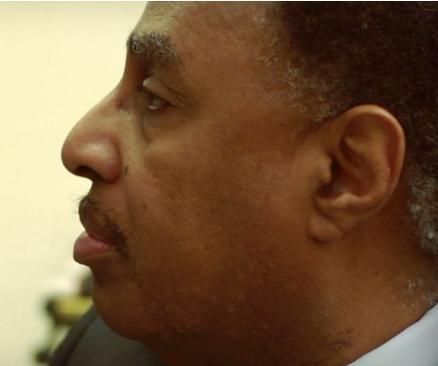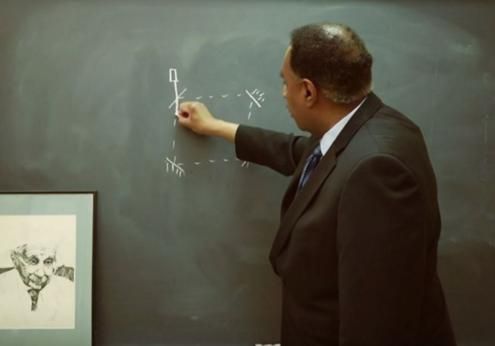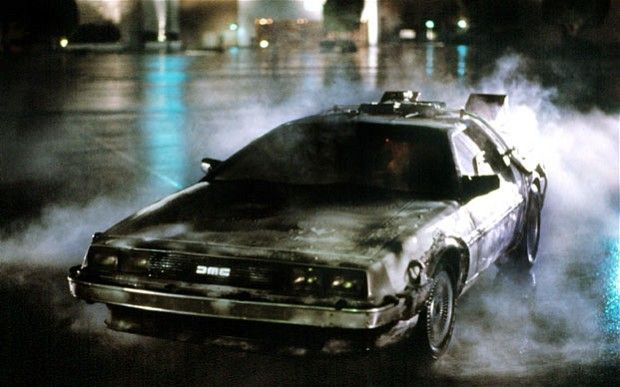"I was lucky enough to take part in a live performance of this and to get an after-show tour. It's really quite scary when you're being chased around in the dark by Jack the Ripper."
Sunday, May 15, 2016
If Never Give up in Life -- You Cant Fail
Dereks Website: http://derekredmond.tv/
This is a Very Inspirational video of a Runner Named Derek Redmond who seriously Injured himself during an Olympic Race. Despite the Agonising Pain and Distortion he Kept on Running. As he was Limping on the Track an Older man Ran Down and Broke though security to Support him, it was his Father. " if Never Give up in Life you Cant Fail "
I DO NOT OWN THE MUSIC IN THE VIDEO.
Credit to Artist : Josh Groban
Song : You Raised me up
This is a Very Inspirational video of a Runner Named Derek Redmond who seriously Injured himself during an Olympic Race. Despite the Agonising Pain and Distortion he Kept on Running. As he was Limping on the Track an Older man Ran Down and Broke though security to Support him, it was his Father. " if Never Give up in Life you Cant Fail "
I DO NOT OWN THE MUSIC IN THE VIDEO.
Credit to Artist : Josh Groban
Song : You Raised me up
Video that will change your life. I have no words left.
This video is of hope, inspiration, giving, helping each other, the kindness of mankind, and it's just plain BEAUTIFUL!
This video should be played after the safety demo on all airplanes and played on television during commercial breaks.
Credit : TheCorpfa
This video should be played after the safety demo on all airplanes and played on television during commercial breaks.
Credit : TheCorpfa
Saturday, May 14, 2016
Thursday, May 12, 2016
6 things we’re all pantang about as Singaporeans
As Singaporeans, we’re acutely aware that there’s another supernatural realm that exists alongside. Hence all our superstitions like not giving clocks as presents or wearing red to a funeral. But there are some things that we’re all universally pantang about, regardless of race, language, or religion. Break one of these taboos and you’ll find yourself dealing with the wrath of humans and non-humans alike!
So check out these six things that we’re all pantang about. They’re the Singapore equivalent of getting hexed, and you’ll be hard-pressed to find someone who doesn’t care about these taboos…
1. Getting tapped on the shoulder
To whom does that hand belong? Credit: The Little Things
Nobody, and I mean nobody gets tapped on the shoulder in Singapore. If you want to get someone’s attention, either you shout “oi!” loudly enough, or you firmly grab their arm to show that you’re human. There’s so many things wrong with tapping someone on the shoulder, and they all result in slaps.
Firstly, if you ever get tapped on the shoulder while walking down a dark, abandoned road, don’t turn around – there’s a ghost waiting to slap you with a supernatural curse. It’s said that you have three “lights” on your body that helps ward away the “yin” energy that ghosts are made up of. There’s one on your forehead, and one on each of your shoulders. If you just turn your head to see who it is, you only have one “light” shining on the supernatural, and that’s not enough to ward it off, hence they can slap you (otherwise every ghost would be slapping you straight in the face right?).
Secondly, if you tap a mahjong player on the shoulder, you’re also going to get a human slap in the face. The same lights that protect you also bring you luck, so physically tapping the shoulder is extinguishing one light, reducing the mahjong player’s luck.
2. The smell of frangipani
The humble frangipani flower. Credit: Yahoo Lifestyle
I hear that it’s a lovely scent that’s really exquisite – if there are frangipanis in sight. If you don’t spy any of those flowers around, but there’s an old abandoned tree, it means there’s a pontianak waiting to attack! I don’t really understand why pontianaks would have such a dead giveaway (since frangipani is a really distinctive scent), but maybe it’s their way of mocking nature. It’s like a gluttonous ghost exuding a durian smell before it attacks.
Also, don’t look up tall trees in the dark for the same reason. You never know what you’re going to see hiding there (good luck if your HDB flat faces the branches of a giant tree).
3. Taking the underground MRT from Novena to Ang Mo Kio
Not something you’ll ever want to see on a train. Credit: Native
Back when the MRT was more reliable and spacious, we were all terrified of taking the train when it went through Bishan area. Legend has it that they had to excavate a cemetery in order to build the North-South line, and all those displaced spirits weren’t too happy about the en bloc sale of their cemetery. If you were the only person in the train (unimaginable, I know right!), you’d be surrounded by otherworldly passengers as you went through Bishan. So nobody wanted to be the only passenger through those few stations.
Nowadays, you’d be so thankful just to have a place to sit. I wonder what happened to all those Bishan ghosts?
4. Saying “dabao” in school and the hospital
What lurks within? Credit: Cater 4 You
“Dabao” literally means “pack up” in Cantonese, but it’s frequently used to mean “takeaway” when ordering food. Use it outside a hawker centre though, and you’ll find yourself “dabaoing” all sorts of unwanted things.
“Dabao” in the hospital means to wrap up a dead body. It’s terribly inauspicious to say that if you’re not actually wrapping up a dead body, because it carries all sorts of deadly connotations. Who knows what might end up in your “dabaoed” food?
You also must not say this during your exam period, because it means that you’ll “dabao” your subjects over to the next year, ie failing it. Say it too many times and nobody will lend you their notes anymore.
5. Apologising before peeing on trees
Inside that tree… Credit: The Straits Times
This generally applies only to men, because it’s difficult for women to discreetly pee at trees due to the differences in anatomy. All Singaporean men learn this in army, because when you have to go, a tree is really the best place – it’s got shelter, a proper target, and blocks you from unwanted peeping toms. But as pontianaks might have demonstrated, trees harbour supernatural spirits. And you don’t want to offend them by peeing on them.
So the procedure is to say sorry, ask for permission, then pee on the tree. But if you get an answer after saying sorry and asking for permission, run away, even if the answer is yes.
6. The feeling of someone staring at you when you’re in bed
Can you spot the ghost staring at you? Credit: Pinterest
Sometimes you can just feel that someone’s staring at you as you close your eyes in your dark, quiet bedroom. Perhaps it’s the slight change in air pressure or temperature, or the random goosebumps and hair standing. Whatever it is, don’t open your eyes if it happens! You can’t escape, but you can reason with it.
Ask politely to be left alone, because you’re tired and you want to sleep. The feeling will go away after a while, and so will whatever thing is staring at you. If it doesn’t, well, closing your eyes for a long time will make you go to sleep anyway.
Source : Marcus Goh - May 10, 2016
Monday, May 9, 2016
Time Machine Experience ( Fangoria 2010 )
A first person walk through of 'Time Machine', a steam punk horror show built and performed in the garage.
Uploaded on Sep 5, 2010 by Flippers
________________________________________________________________________
Behind the scene - Engineer's View ________________________________________________________________________
questioneering :
JohnnyQuest6 :
"Really amazing! I'm sure it took loads of rehearsal to get it right (at first viewing, I thought, "No way they did this live..."). Do you think this is practical to run repeatedly, like at a theme park or on Halloween? I noticed that the hard-to-reset things (glass breaking/gunshots) were mostly sound effects, but I think you'd need a "guide" to keep people in the Machine during the Nazi sequence, but get them out of it at Whitechapel (and back in again!). How many folks per hour?"
Comments from Creator.......
Flippers :
@JohnnyQuest6 lots of rehearsals, but we got it live in the end. We even devised a "special edition" for anybody that rides it twice. We performed it about 15 times on it's first night, with 6 people per show. It takes about 10- 15 mins per show. The soundtrack is (almost) automated so resetting the show is pretty simple. the gunshots are part of the master sound track, synced to audio inside the machine - the smashing glass is actually a bag of chains being dropped (watch the Copper at 7.28)
it took about 18 months of tinkering in the garage to build it, we've been planning and designing it since way before. There's one top secret bit of kit we had to build first to enable the the machine to travel between scenes. The whole set is only in a normal sized double garage.
One of the most time consuming bits of the build was the brick walls in old London, each brick hand carved from polystyrene, that might have been a mistake.
The show was just for our friends.
Uploaded on Sep 5, 2010 by Flippers
________________________________________________________________________
Behind the scene - Engineer's View ________________________________________________________________________
questioneering :
JohnnyQuest6 :
"Really amazing! I'm sure it took loads of rehearsal to get it right (at first viewing, I thought, "No way they did this live..."). Do you think this is practical to run repeatedly, like at a theme park or on Halloween? I noticed that the hard-to-reset things (glass breaking/gunshots) were mostly sound effects, but I think you'd need a "guide" to keep people in the Machine during the Nazi sequence, but get them out of it at Whitechapel (and back in again!). How many folks per hour?"
Comments from Creator.......
Flippers :
@JohnnyQuest6 lots of rehearsals, but we got it live in the end. We even devised a "special edition" for anybody that rides it twice. We performed it about 15 times on it's first night, with 6 people per show. It takes about 10- 15 mins per show. The soundtrack is (almost) automated so resetting the show is pretty simple. the gunshots are part of the master sound track, synced to audio inside the machine - the smashing glass is actually a bag of chains being dropped (watch the Copper at 7.28)
it took about 18 months of tinkering in the garage to build it, we've been planning and designing it since way before. There's one top secret bit of kit we had to build first to enable the the machine to travel between scenes. The whole set is only in a normal sized double garage.
One of the most time consuming bits of the build was the brick walls in old London, each brick hand carved from polystyrene, that might have been a mistake.
The show was just for our friends.
Sunday, May 8, 2016
Iranian scientist claims to have invented 'time machine' - "The Aryayek Time Traveling Machine"
An Iranian businessman claims to have mastered time with a machine that allows users to fast forward up to eight years into the future.
Have you ever wanted to see what the future will be like? One day someone somewhere could really invent a time machine that allows us to visit the future.
Can we really find out what will happen to us in eight years?
A new invention called the Aryayek time traveling machine is a created a PC-sized device that can give users 'details of the next five-eight years' of their lives.
The DeLorean time machine - no word if Ali Razeghi has used this as a template
Ali Razeghi, a Tehran scientist has registered "The Aryayek Time Traveling Machine" with the state-run Centre for Strategic Inventions.
The device can predict the future in a print out after taking readings from the touch of a user, he told the Fars state newsagency.
Razaeghi, 27, said the device worked by a set of complex algorithims to "predict five to eight years of the future life of any individual, with 98 percent accuracy".
As the managing director of Iran's Centre for Strategic Inventions, Razeghi is a serial inventor with 179 other inventions listed under his own name. "I have been working on this project for the last 10 years," he said.
"My invention easily fits into the size of a personal computer case and can predict details of the next 5-8 years of the life of its users. It will not take you into the future, it will bring the future to you."
Razeghi says Iran's government can predict the possibility of a military confrontation with a foreign country, and forecast the fluctuation in the value of foreign currencies and oil prices by using his new invention.
"Naturally a government that can see five years into the future would be able to prepare itself for challenges that might destabilise it," he said. "As such we expect to market this invention among states as well as individuals once we reach a mass production stage."
Razeghi said his latest project has been criticised by friends and relatives for "trying to play God" with ordinary lives and history. "This project is not against our religious values at all. The Americans are trying to make this invention by spending millions of dollars on it where I have already achieved it by a fraction of the cost," he said. "The reason that we are not launching our prototype at this stage is that the Chinese will steal the idea and produce it in millions overnight."
Source:By Ahmed Vahdat - 10 Apr 2013------------------------------------------------------------------------------------------------------
Note : Razeghi, who's only 27 years old (as of year 2013), has actually invented 179 other inventions in his young life. This particular time machine has been a project of his for the past 10 years. What is different with this particular machine is that it doesn't need gigawatts of electricity to use it.
Which if true, we're trusting the work of a 17-year-old kid. Whatever. I'm still down with it.
The story says Razeghi is a supervisor at Iran’s Center for Strategic Inventions and Inventors and claims that his baffling invention won’t be available for another few years, at least. “We’re waiting for conditions to improve in Iran,” Razeghi told the outlet, according to a translation by The Huffington Post.
During the interview, Razeghi refusing to give out many details because he was worried his idea would be stolen and reproduced by China. He did say, however, that his device incorporates both hardware and software components, and that it cost roughly 500,000 Iranian tomans (about $400). When asked whether he was worried the machine might cause problems, he said he envisions it used selectively, to tell a couple the future sex of their child, for example.
Neither Iran nor Razeghi have publicly responded to the report
Razegi also says that he has registered 'the Aryayek Time Traveling Machine' with the state-run Center for Strategic Inventions, but the Iranian authorities rejected the claims.
"Such a claim has not been registered in Iran's State Organization for Registration of Deeds and Properties," said Mehdinejad Nouri.
Predicting the future, even on relatively narrow issues, is a notoriously complex task. It usually requires creating an accurate computer model of a system that takes into account numerous factors, and often requires plenty of computational power. Predicting a future event in its entirety is virtually impossible with existing technology.
*******************************************************************************************
Iran: No, We Don't Have a 'Time Machine'
By LEE FERRAN (April 12, 2013)
In a shocking revelation that's sure to disappoint "Back to the Future" fans around the globe, an Iranian official has been forced to deny that an inventor from the Islamic nation has registered a "time machine" with the state.
"Making scientific claims is free for all, but registration of these claims as inventions should undergo certain legal stages based on scientific proofs and evidence," Iran's Deputy Minister of Science, Research and Technology Mohammad Mehdinejad Nouri said today, according to Iran's semi-official Fars News Agency. "Such a claim has not been registered in Iran's State Organization for Registration for Strategic Inventions."
Nouri's announcement in Fars - also reported by Iran's PressTV - came days after Fars ran a bizarre story in which 27-year-old Iranian inventor Ali Razeqi reportedly claimed to have registered the "Aryayek Time Traveling Machine." The young man's definition of "time travel" is a far reach from Marty McFly's, however, as he said his device is only meant to allow the user to predict the "next five to eight years of the life of its users" with up to 98 percent accuracy.
"It will not take you into the future, it will bring the future to you," Razeqi said, according to today's Fars report. No flux capacitor here.
Razeqi's original story, which appeared on Fars' Farsi-language site, mysteriously vanished from the web Thursday, according to The Washington Post, but not before it gained a curious following on social media and with some skeptical Western news outlets - apparently enough to prompt Nouri's public response.
Foreign Policy noted that beyond the major claim of the original article about a watered-down "time machine," some of the details in the report raised enough questions that their reporter concluded, "If this story is true at all, it's actually just about one obscure crank saying ridiculous things - a phenomenon hardly unique to Iran."
This Scientist Is Building A Real Time Machine - And Thinks It Will Work
Source: Rob Waugh's Yahoo Blog - May 6, 2016

‘If time travel is possible, where are the tourists from the future?’ Stephen Hawking asked in A Brief History Of Time.
But one scientist believes that time travel is possible - and he has the design for a working ‘time telephone’, which he believes will receive messages from the future.
Ronald Mallett, 69, is a respected theoretical physicist at the University of Connecticut, and the subject of a new documentary, ‘How To Build a Time Machine’.
He believes that a ‘tunnel’ of laser light can send messages through time - and that a time machine will be built this century.
He also thinks he has the answer to Stephen Hawking’s question about why we have never seen a time traveller.
Mallett’s quest to build a time machine has been a lifelong one - inspired by the death of his father, when he was aged 10.
The young Mallett - who read a comic book version of H.G. Wells’ The Time Machine - vowed to build a machine which would let him travel back and warn his father of the heart attack which would kill him on his 11th wedding anniversary.
Ronald Mallett says, in How To Build A Time Machine, ‘I would say it was fair to call what I was doing an obsession. I was obsessed with wanting to see my father again.
‘I was obsessed with trying to find out how one could control time.
‘Everything that I became, the whole of my personality, everything about being a physicist, was based on my love for my father, and my desire to see him again.’

‘I had a mission. My goal was to figure out how to build the time machine.’
He has designed a machine which can ‘twist’ time using lasers - allowing signals to travel into the past - and now hopes to build it.
The idea is based on Einstein’s theories - and the current prototype version of the machine is a series of stacked ring lasers, glowing green, which circle a glass tube.
Mallett’s machine is based on Einstein’s General Theory of Relativity, and the fact that light can create gravitational fields.
In a scientific paper, Mallett wrote, ‘For the strong gravitational field of a circulating cylinder of light, I have found new exact solutions of the Einstein field equations for the exterior and interior gravitational fields of the light cylinder.
‘The presence of closed timelike lines indicates the possibility of time travel into the past. This creates the foundation for a time machine based on a circulating cylinder of light.’
Mallett believes physical time travel is impossible, but he thinks that messages could be sent through time - in the form of neutrons sent through a ‘tunnel’ of light.

Mallet says, ‘By assigning a 1 to the ‘spin up’ direction and a 0 to the 'spin down’ direction then [we] could send a binary code with a stream of neutron spins.
‘For example, neutrons with 'spin up’, 'spin down’, 'spin down’ would represent a binary code100 which is the number 4.
But the one thing Mallett’s machine will not be able to do is communicate with his father - or anyone else in the past.
If the machine works as expected, it will only be able to send and receive messages from the moment it is turned on - or the future - and no earlier point.
Mallett says, ‘When the first time machine is turned on it will be possible for our descendants to contact us - but we will not be able to contact our ancestors.’
In theory, at least, this solves Stephen Hawking’s problem with time travel.
The reason we have not heard from or seen time travellers is that it only becomes possible to communicate across time once the time machine is built.
Other physicists are less sure that a time machine is possible - and even Mallett says that the process of building one may be long and expensive.
Mallett has worked for decades to get to this point, publishing multiple papers on the subject - and writing an autobiography, Time Traveler, which has been optioned as a film by Spike Lee.
Mallett says, ‘When I first got inspired to study time travel, I had to be very secretive. As a young physicist, you don’t broadcast widely that your research is fueled by your passion to go back in time to see your father.
‘Instead, I cloaked my urge to understand time travel by studying black holes. But in fact, black holes and time travel are related.
‘I knew from my studies of Einstein’s theories that the strong gravity of rotating black holes could affect time. And I wondered if the gravity of circulating light, such as that created by very strong lasers, could mimic the conditions in a rotating black hole and send information into the past and future.
‘My whole existence, who I am, is due to the death of my father, and my promise to myself to figure out how to affect time with Einstein’s work as a foundation.’
'I’m the theoretical guy. The experimental physicists will have to take on the daunting – and very expensive – role of testing my theory.’

‘If time travel is possible, where are the tourists from the future?’ Stephen Hawking asked in A Brief History Of Time.
But one scientist believes that time travel is possible - and he has the design for a working ‘time telephone’, which he believes will receive messages from the future.
Ronald Mallett, 69, is a respected theoretical physicist at the University of Connecticut, and the subject of a new documentary, ‘How To Build a Time Machine’.
He believes that a ‘tunnel’ of laser light can send messages through time - and that a time machine will be built this century.
He also thinks he has the answer to Stephen Hawking’s question about why we have never seen a time traveller.
Mallett’s quest to build a time machine has been a lifelong one - inspired by the death of his father, when he was aged 10.
The young Mallett - who read a comic book version of H.G. Wells’ The Time Machine - vowed to build a machine which would let him travel back and warn his father of the heart attack which would kill him on his 11th wedding anniversary.
Ronald Mallett says, in How To Build A Time Machine, ‘I would say it was fair to call what I was doing an obsession. I was obsessed with wanting to see my father again.
‘I was obsessed with trying to find out how one could control time.
‘Everything that I became, the whole of my personality, everything about being a physicist, was based on my love for my father, and my desire to see him again.’

‘I had a mission. My goal was to figure out how to build the time machine.’
He has designed a machine which can ‘twist’ time using lasers - allowing signals to travel into the past - and now hopes to build it.
The idea is based on Einstein’s theories - and the current prototype version of the machine is a series of stacked ring lasers, glowing green, which circle a glass tube.
Mallett’s machine is based on Einstein’s General Theory of Relativity, and the fact that light can create gravitational fields.
In a scientific paper, Mallett wrote, ‘For the strong gravitational field of a circulating cylinder of light, I have found new exact solutions of the Einstein field equations for the exterior and interior gravitational fields of the light cylinder.
‘The presence of closed timelike lines indicates the possibility of time travel into the past. This creates the foundation for a time machine based on a circulating cylinder of light.’
Mallett believes physical time travel is impossible, but he thinks that messages could be sent through time - in the form of neutrons sent through a ‘tunnel’ of light.

Mallet says, ‘By assigning a 1 to the ‘spin up’ direction and a 0 to the 'spin down’ direction then [we] could send a binary code with a stream of neutron spins.
‘For example, neutrons with 'spin up’, 'spin down’, 'spin down’ would represent a binary code100 which is the number 4.
But the one thing Mallett’s machine will not be able to do is communicate with his father - or anyone else in the past.
If the machine works as expected, it will only be able to send and receive messages from the moment it is turned on - or the future - and no earlier point.
Mallett says, ‘When the first time machine is turned on it will be possible for our descendants to contact us - but we will not be able to contact our ancestors.’
In theory, at least, this solves Stephen Hawking’s problem with time travel.
The reason we have not heard from or seen time travellers is that it only becomes possible to communicate across time once the time machine is built.
Other physicists are less sure that a time machine is possible - and even Mallett says that the process of building one may be long and expensive.
Mallett has worked for decades to get to this point, publishing multiple papers on the subject - and writing an autobiography, Time Traveler, which has been optioned as a film by Spike Lee.
Mallett says, ‘When I first got inspired to study time travel, I had to be very secretive. As a young physicist, you don’t broadcast widely that your research is fueled by your passion to go back in time to see your father.
‘Instead, I cloaked my urge to understand time travel by studying black holes. But in fact, black holes and time travel are related.
‘I knew from my studies of Einstein’s theories that the strong gravity of rotating black holes could affect time. And I wondered if the gravity of circulating light, such as that created by very strong lasers, could mimic the conditions in a rotating black hole and send information into the past and future.
‘My whole existence, who I am, is due to the death of my father, and my promise to myself to figure out how to affect time with Einstein’s work as a foundation.’
'I’m the theoretical guy. The experimental physicists will have to take on the daunting – and very expensive – role of testing my theory.’
Subscribe to:
Posts (Atom)



















